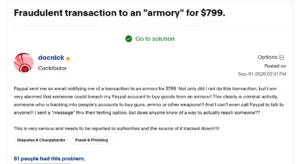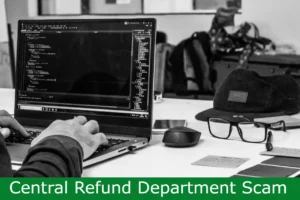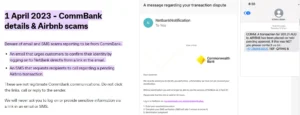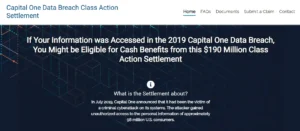Usps.orderhandle.com Scam Explained – This article aims to provide a comprehensive understanding of the fake USPS redelivery website scam, with a focus on recognizing its key characteristics.
The scam involves a deceptive website, usps.orderhandle.com, which closely imitates the authentic USPS site and replicates the design and logo of UPS.
Through the use of random text messages containing fictitious tracking numbers, the scam aims to deceive recipients into clicking on a malicious hyperlink.
Upon clicking the link, victims are redirected to the scam website and prompted to enter personal information, including name, address, phone number, email, and credit card details, under the guise of shipping confirmation.
It is crucial for individuals to exercise caution when receiving text messages from USPS, as these could potentially be part of the scam.
By being aware of the red flags associated with scam messages and recognizing the indications of scam websites, individuals can protect themselves from the risks of providing personal information, such as identity theft and credit card fraud.
Table of Contents
About Usps.orderhandle.com Scam
The scam involves a fake USPS redelivery website, usps.orderhandle.com, which is designed to mimic the authentic USPS site and deceive visitors into providing personal information.
Scammers use this fraudulent website to trick victims into entering their personal information, such as name, address, phone number, email, and credit card details.
The website replicates the design and logo of UPS to further deceive visitors. It is important to analyze the scam website design and recognize the discrepancies from the authentic USPS site.
The scam website is registered by an anonymous entity and uses a privacy service to hide its identity. This deceptive technique aims to exploit victims and potentially commit fraud using the obtained personal information.
Recognizing the scam technique and analyzing the scam website design is crucial in protecting individuals from falling victim to this scam.
Mass Messaging Technique
Utilizing a mass messaging technique, scammers randomly send text messages impersonating a well-known shipping company. They encourage recipients to click on a hyperlink and provide fictitious tracking numbers to deceive and trick potential victims.
This technique aims to prey on individuals who may be expecting a package and are more likely to fall for the scam.
To prevent falling victim to these phishing attempts, it is important to be cautious when receiving text messages claiming to be from USPS.
Some key indicators of scam text messages include: – Unsolicited messages – Requests for personal information – Suspicious tracking numbers – Urgency or pressure to act quickly – Poor grammar or spelling mistakes
By being vigilant and identifying these red flags, individuals can protect themselves from falling prey to scams and avoid sharing sensitive personal information with malicious actors.
Deceptive Tracking Numbers
Impersonating a well-known shipping company, scammers employ a mass messaging technique, randomly sending text messages to potential victims, which include deceptive tracking numbers to entice recipients. These tracking numbers, although fictitious and unrelated to any actual package, play a significant role in the scam’s effectiveness.
By providing a sense of legitimacy, they aim to deceive and trick victims into believing the messages are genuinely from USPS. The impact of these deceptive tracking numbers on scam victims is profound, as it increases the likelihood of them clicking on the malicious link embedded in the message.
Education plays a crucial role in identifying and avoiding scams. By educating individuals about the deceptive tactics used by scammers, such as suspicious tracking numbers, people can become more vigilant and better equipped to protect themselves from falling victim to such scams.
Process After Clicking
After clicking on the malicious link, victims are directed to the scam website, where they are prompted to enter personal information, including name, address, phone number, email, and credit card details, under the false pretense of shipping confirmation. This process is designed to exploit unsuspecting individuals and potentially commit fraud.
The consequences of providing personal information on the fake USPS redelivery website can be severe. Scammers can misuse this data for identity theft and credit card fraud, posing a significant risk to victims.
If you have fallen victim to the scam, it is crucial to take immediate action. Contact your credit card company to report the fraudulent activity, monitor your accounts for any suspicious transactions, and consider placing a fraud alert on your credit reports.
Additionally, report the scam to the Federal Trade Commission (FTC) and USPS to raise awareness and potentially prevent others from falling victim to the same scam.
Caution when Receiving Messages
Caution should be exercised when receiving text messages claiming to be from USPS, as they may potentially be phishing attempts or scams. It is important to be aware of the risks associated with these messages and to take appropriate measures to protect personal information.
One important step is to report any scam messages to the appropriate authorities, such as the Federal Trade Commission (FTC).
Additionally, there are several tips that can help in identifying phishing attempts. Recipients should be wary of unsolicited messages, especially those requesting personal information. Suspicious tracking numbers or messages that create a sense of urgency should also raise red flags.
Moreover, poor grammar or spelling mistakes can indicate a fraudulent message. By staying vigilant and following these guidelines, individuals can minimize the risk of falling victim to scams.
Importance of Recognizing Scam Websites
Understanding the deceptive tactics employed by scammers is crucial in identifying fraudulent websites masquerading as legitimate USPS platforms. To help you recognize scam websites, here are three key points to consider:
Design and Logos: Scammers meticulously replicate the design and logos of authentic websites to deceive visitors. Pay close attention to any inconsistencies or slight variations that may indicate a fraudulent domain.
Suspicious URLs: Check the website’s URL carefully. Scammers often use domain names that are similar to the official USPS website but with slight alterations. Look out for misspellings, additional words or characters, or unfamiliar domain extensions.
SSL Certificates: Legitimate websites usually have SSL certificates, indicated by a padlock icon in the address bar. Scam websites may lack this security feature or display warnings when attempting to access them.
By familiarizing yourself with these indicators, you can avoid falling victim to scams and protect your personal information from potential exploitation. Stay vigilant and prioritize online security.
Risks of Providing Personal Information
One must be aware of the potential risks associated with disclosing personal information on fraudulent websites. Scammers who operate fake USPS redelivery websites aim to exploit victims and potentially commit fraud. By providing personal details such as name, address, phone number, email, and credit card information, individuals put themselves at risk of identity theft and credit card fraud.
Scammers can misuse this information for their own gain, potentially leading to financial loss and damage to one’s reputation. It is crucial to exercise caution and protect sensitive data by avoiding sharing personal information on suspicious websites. Being vigilant and recognizing the signs of a scam can help prevent falling victim to these fraudulent activities and safeguard against the risks associated with providing personal information online.
Frequently Asked Questions
How can I report the usps.orderhandle.com scam to USPS?
To report the usps.orderhandle.com scam to USPS, you can visit the official USPS website and navigate to their “Contact Us” page. Provide details about the scam, including the website URL and any relevant information.
What should I do if I clicked on the link in the scam message?
If you clicked on the link in the scam message, take immediate action to protect yourself. Disconnect from the website, run a security scan on your device, change passwords, and monitor your accounts for any suspicious activity. Educate others about online scams to prevent future incidents.
Are there any warning signs that can help me identify a scam text message?
Warning signs of a scam text message include unsolicited messages, requests for personal information, suspicious tracking numbers, urgency or pressure to act quickly, and poor grammar or spelling. Prevention measures include exercising caution, verifying sources, and being skeptical of unsolicited messages.
Can scammers use my personal information to steal my identity?
Scammers can use personal information obtained through phishing scams to steal identities. To protect personal information, individuals should be cautious of sharing sensitive data, regularly update passwords, enable two-factor authentication, and monitor their financial accounts for any suspicious activity.
What are some steps I can take to protect myself from falling victim to scams like this?
To protect yourself from falling victim to scams like the fake USPS redelivery website, take steps for online safety. Be aware of common types of online scams, such as phishing. Practice caution with unsolicited messages and avoid sharing personal information without verifying the source.
Also Read
Is Advancedfinancialhelp.org Scam or Legit? Unveiling The Truth
Mupups Scam Explained: A Scam Usps Website Stealing Your Data
Is airjordanofficial.us.com Legit or a Scam? Uncovering The Truth
Also Read
Want a Bump Energy Review – Boost Your Energy Or Scam?
Vuletti Jewelry Reviews – Is Vuletti Jewelry A Scam or Legit?
Cool n Save Reviews – Is Cool N Save Legit or a Scam?
Also Read
Arfym Clothing Review – Affordable And Trendy Clothing?
Vrinax Reviews – Is Vrinax.Com Legit or a Scam?
Is Diarygiraffe Com Legit or a Scam? – The Qvc Impersonation Scam
Also Read
Is Mymups.Com Scam or Legit? – Fake Usps Website Threat
Is Mrkups.Com Scam or Legit? – Impersonating Usps
Is Salesaverr.Com Scam or Legit? Salesaverr.Com Reviews
Also Read
Is Oruzora.Com Scam or Legit? Using HSN and AMAZON Brands
Is Pearllis.Com Scam or Legit? Pearllis.Com Reviews
Cweede.com Reviews – Is Cweede.com Legit or a Scam?
Also Read
Is Geek Squad Email Scam or Legit? How to Stay Safe Online
Faith Bra Reviews – Is Faith Bra Legit & Worth Trying?
Baiia Swimwear Reviews – Is Baiia Swimwear Worth the Hype?
Also Read
Fokups Scam Explained – The Fake Ups Redelivery Website Scam
Is Allure Sports Scam or Legit? Alluresports.Com Scam Review
Is Kramer-Newman Bottle Return Scam or Legit? – Find Out!
Also Read
Is enroll.krollmonitoring.com Scam or Legit? Uncovering The Truth
Is Fivehuge.Com Legit Or A Scam? Unveiling Website Reviews
Census Bureau Texts Scam – Spotting Genuine Census Bureau Text Messages
Also Read
Is Yourhealthcarepilot.Com Legit or Scam? Protect Yourself From Scams

















































